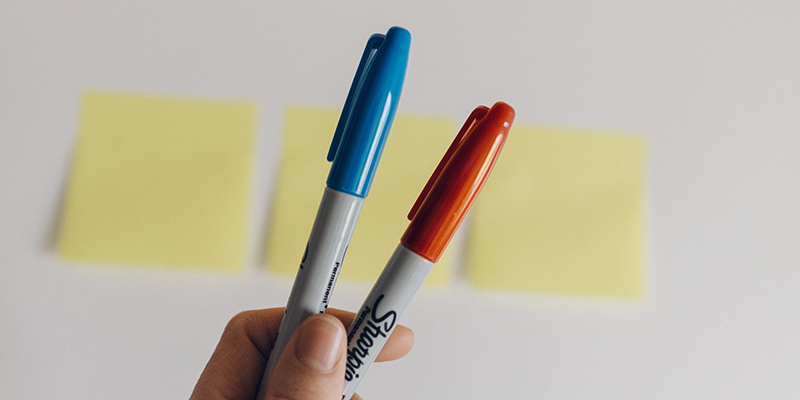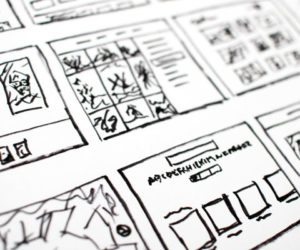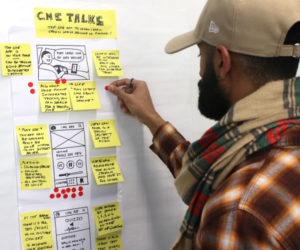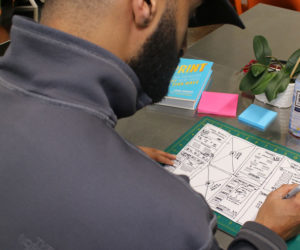That’s it: you’ve decided to do a design sprint workshop.
You’ve learned what it is, what it can do, and how it works.
Now is the time to organize one for your team.
Here’s how we prepare a successful design sprint at Pentalog.

Photo by Gautam Lakum on Unsplash
Wait, I thought a design sprint took only four days?
Yes. That’s why we have to know what we’ll be doing before the start.
A design sprint workshop is a four-day process that allows you to compress a lot of work in a very short amount of time. You’ll decide on the problem, find a solution, and create and test a prototype in only four days.
Four. Think about that: you’ll be done while your colleagues at the office are still trying to get through the emails of the first days of the week.
But the schedule is so tight that you will want to make sure everything is in place on the very first morning of the event.
First, let’s talk about the participants
Yep. The first thing we do at Pentalog is to organize one or two calls with our design sprint client.
In one of the calls, we’ll discuss the following:
- Who will be the experts we hear from on the first day? By “experts,” I mean people who know about your product or your field. They will often be users of your product or service, and they could also be the testers of your prototype. Try to find four experts, and one or two backups, just in case.
- Who will test the prototype? You need around five testers plus one or two backups. If the experts can double as testers, go ahead.
- Who will be the decider? And who will you invite to participate in the workshop? The person at the other end of the line is often the natural decider because we try to prepare the design sprint workshop with someone who has authority within the company. And we’ll make sure the group of participants is diverse. They should come from all departments of the company, or even from outside.
Now, what is the goal of this workshop?
The second call helps to understand the company and its challenges with the goal of defining the parameters of the exercise.“You can’t boil the ocean,” says Jeff Mignon, Pentalog’s Chief of Growth.
He’s right: one design sprint workshop cannot solve all of a company’s problems at once.
You need to think about what the workshop will try to accomplish, and the questions that you will try to answer.
What are the key results you expect?
Oh, and it’s important to have a frank conversation about expectations.
Let’s talk about expectations
We always make sure to have that discussion with our clients, because they need to be reminded of the outcomes they can realistically expect.
“If you expect that we test a full product, it’s not gonna happen,” clarifies Jeff Mignon. “In some cases, you have enough at the end of the workshop to put things in motion. But you might also need an iteration sprint to optimize the solution because the feedback received is pushing you to refine the product.”
It’s essential to think about your long-term goals, but remind your team and yourself that the design sprint workshop can only be part of the process that leads you to success.
Be clear on the rules
Before anyone enters the room for the workshop, the participants should know about the rules: no phone and no computer will be allowed, except for certain tasks or during breaks.
The decider or the organizer from the client’s team should always explain these rules to the participants. Don’t forget to tell them a design sprint workshop is not a party on the beach, but a rather intensive endeavor that will leave them exhausted at night, but also excited, and that it will lead to results.
“The process is amazing, says Jeff Mignon, and you need to come with a totally open mind.”
While you’re at it, remind everyone that they will need to listen to the experts. “This is a customer-centric approach,” adds Jeff.
“What are the needs of your customers? What are their challenges?” The experts can answer these questions for you.
Prepare the room
Have you picked a room for the workshop?
At Pentalog, we usually hold the event at the client’s offices.
If they are in NYC, we’ll do the first two days at the client’s place, then move the work, with a smaller team, to our offices, in Industry City.
Why change the venue? Because you don’t need the whole team for the last two days. We like to invite our clients over because we have the right setup in place.
But it can be done anywhere. And we could work the whole time at our client’s offices.
Also, make sure you order food and drinks for everyone. Not that we encourage anyone to drink, but the team might appreciate it at the end of a very intensive, condensed day.
Tools and supplies
At Pentalog, we build the prototypes with Adobe XD, a great tool for quickly building testable prototypes. It’s not the only tool.
Will your testers join you on location, or will they need to access the prototype remotely? If so, you will need a tool like Whereby or Zoom.
What more do you need? Post-it notes, of course! We use them all the time. For a complete list of supplies, and some additional tips, visit this Google Venture page on design sprints.
Additional tips
It might be a good idea to have the participants read about the design sprint methodology and workshop. Send them to our series of articles on the topic.
Of course, our team at Pentalog will be glad to help you set up and conduct a results-packed design sprint workshop. Talk to us.








